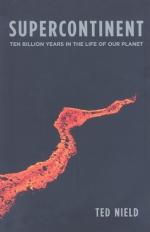|
This section contains 1,640 words (approx. 6 pages at 300 words per page) |

|
The earth comprises a number of lithospheric plates that move apart at mid-oceanic ridges, are consumed at subduction zones, collide with each other in collisional orogens, or slide past each other along transform boundaries. Although oceanic crust is continually being created and destroyed, long-lived stable parts of continents called cratons have remained undeformed for billions of years. Continental plates containing ancient cratons have episodically collided and assembled in global periods of orogenesis to form supercontinents. Supercontinents eventually become unstable, as such a large single landmass acts as a thermal lid, limiting escape of Earth's internal heat. Supercontinent breakup occurs when old crustal weaknesses (such as orogenic belts created during supercontinent assembly) overlay several mantle plumes, or due to the formation of a superplume. Dispersed fragments move across the globe to subsequently amalgamate to form another supercontinent. The process of supercontinent formation, breakup, and dispersal has continued cyclically through...
|
This section contains 1,640 words (approx. 6 pages at 300 words per page) |

|


